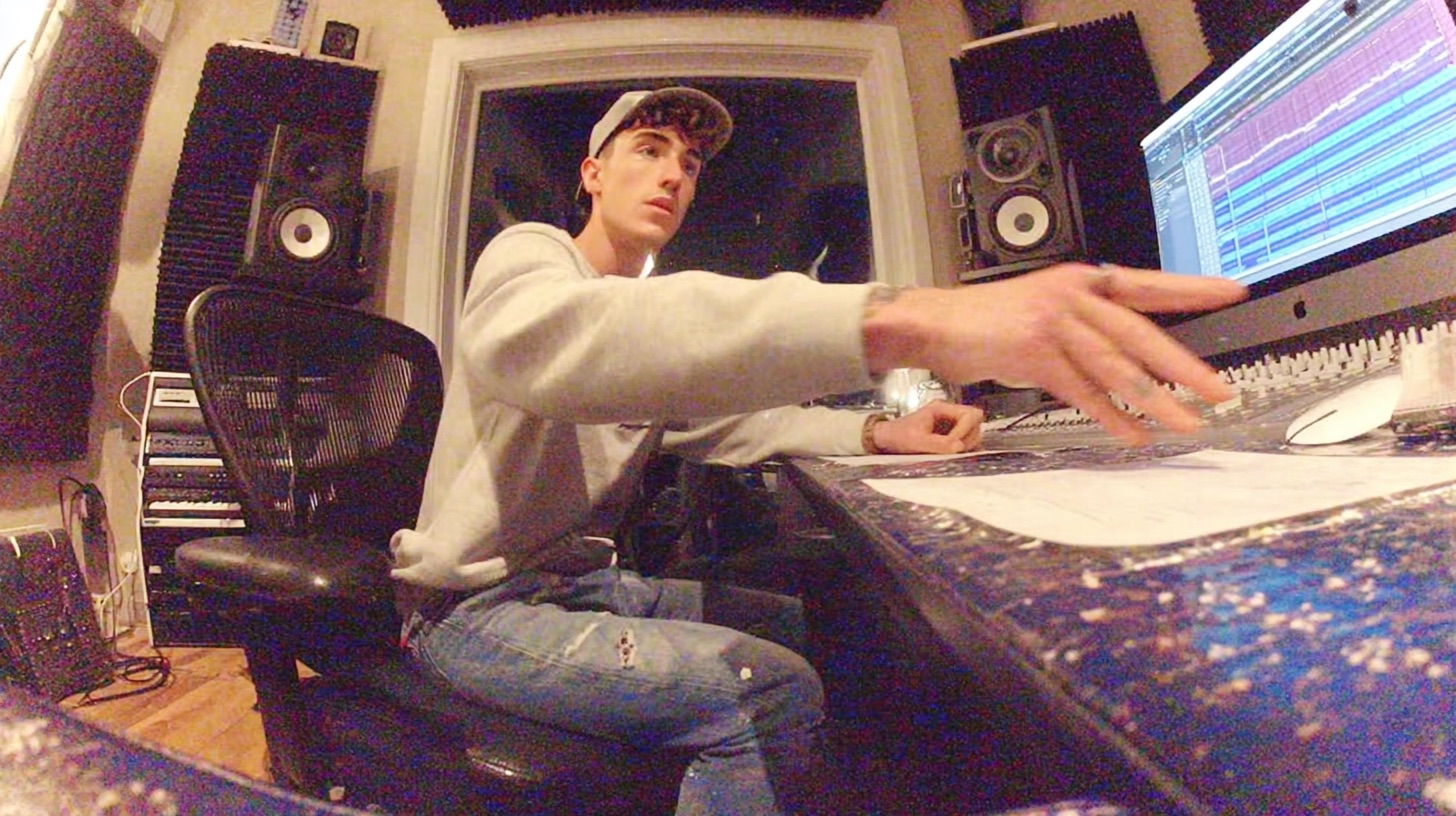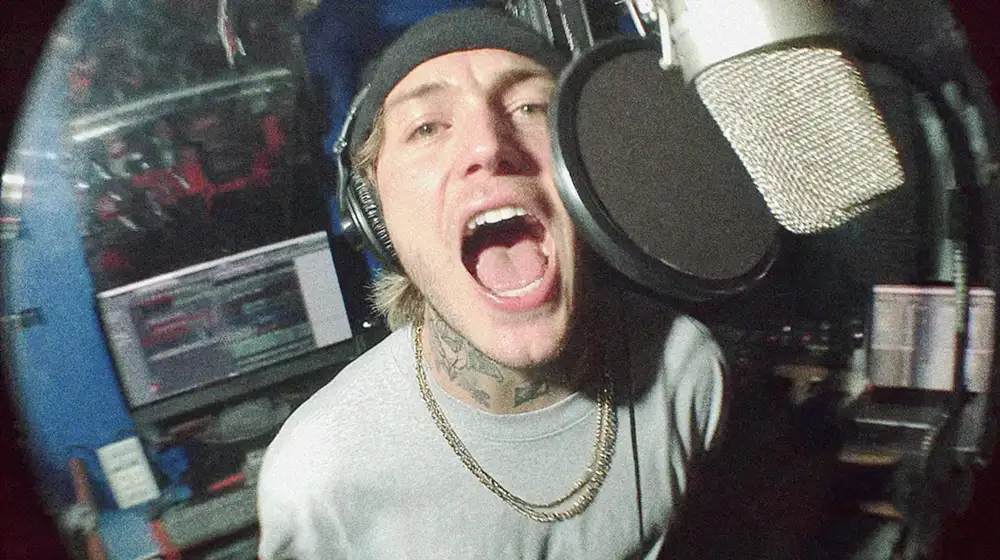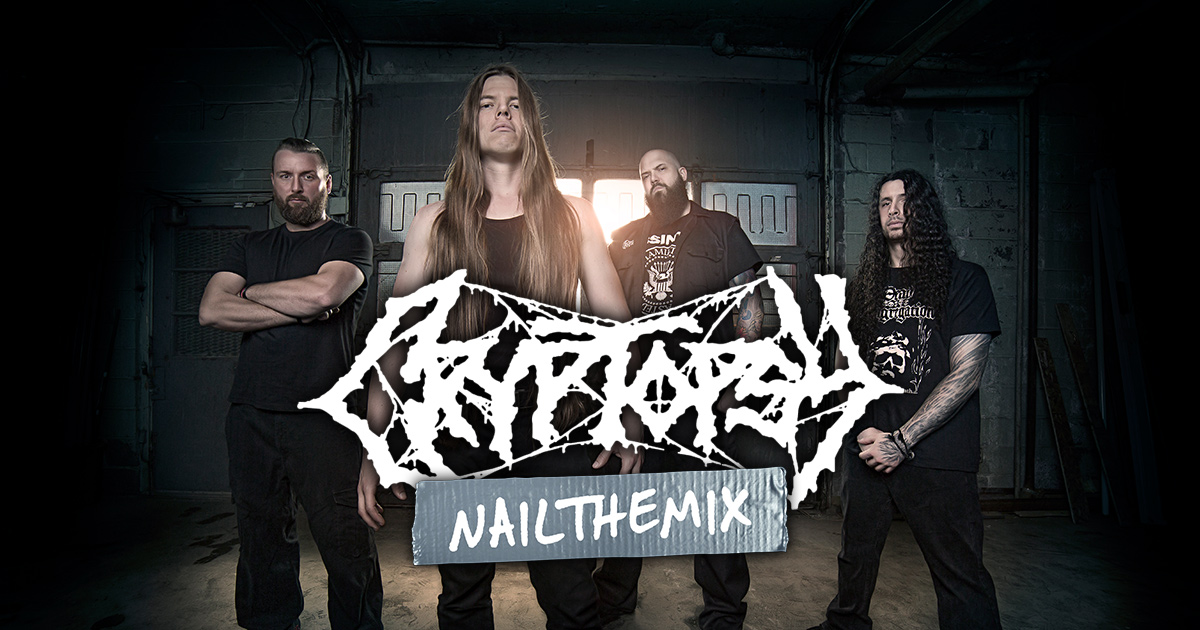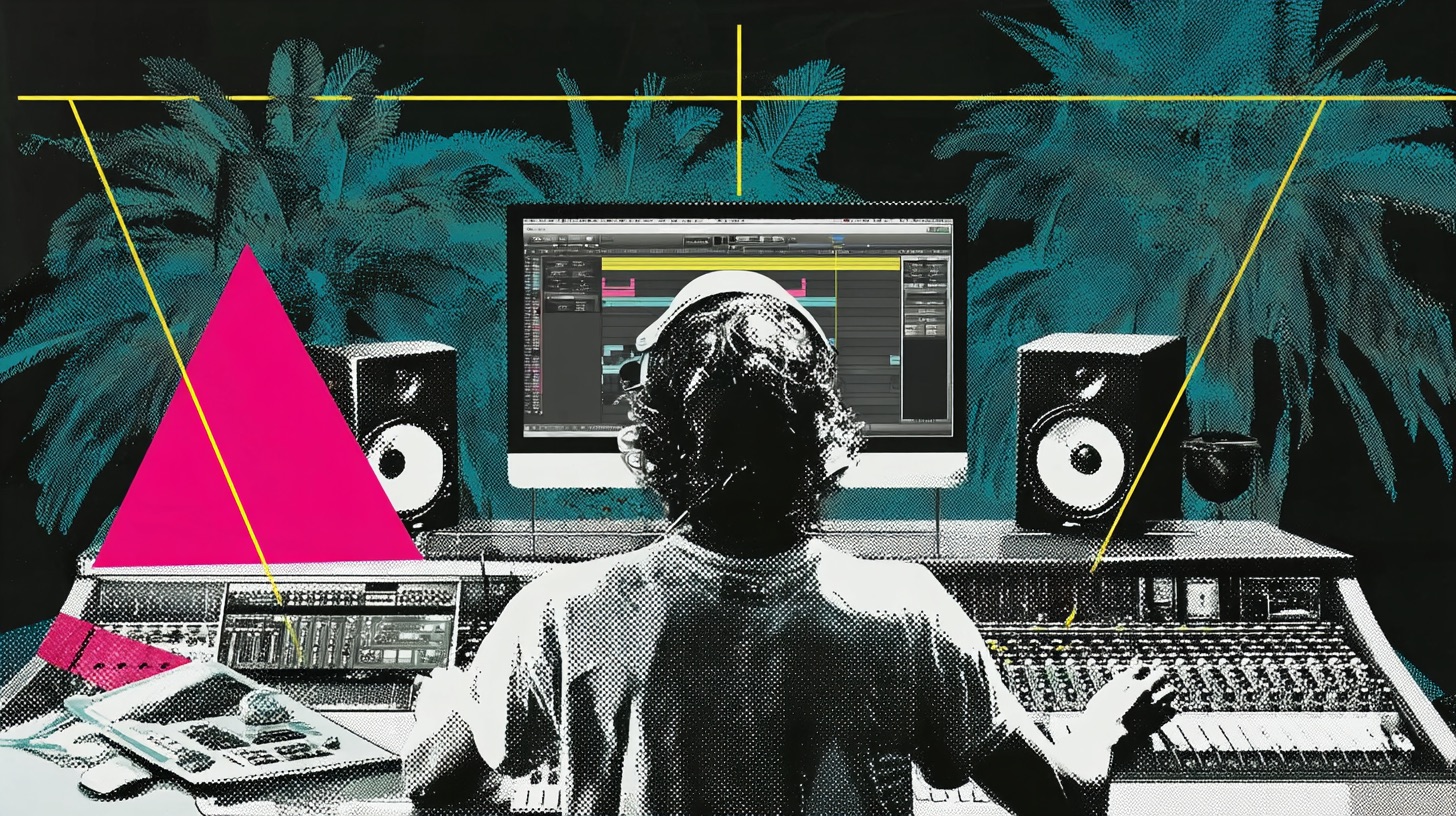
MP3 vs WAV: Which Audio Format is Best for Metal Production?
Nail The Mix Staff
Alright, let's talk about something that might seem basic, but honestly, get it wrong and you could be kneecapping your mixes before you even fire up your first EQ plugin: MP3 vs WAV. We all know them, we all use them, but when you’re deep in a metal production, from tracking those razor-sharp riffs to delivering the final master, knowing which format to use (and why) is absolutely crucial. This isn’t just pixel-peeping for audio nerds; it directly impacts the punch, clarity, and overall aggression of your tracks.
So, let's cut through the noise and break down these two crucial audio file types to figure out what actually matters for us – metal producers grinding it out in our DAWs.
Understanding the Core Differences: Lossy vs. Lossless
First up, the big picture. This whole mp3 vs wav thing boils down to one key concept: lossy vs. lossless compression.
WAV: The Uncompressed Behemoth
Think of a WAV file (Waveform Audio File Format) as the original, high-resolution photograph of your audio. It’s typically uncompressed, meaning it contains all the original audio data captured during recording. This is what we call lossless. When you record into your interface – whether it's a Focusrite Scarlett, an Antelope Audio Orion, or a top-tier Universal Audio Apollo – you're capturing audio as Pulse Code Modulation (PCM) data, which is what WAV files store.
Key things about WAV:
- Bit Depth: This determines the dynamic range. A 16-bit WAV is standard for CDs, but for recording and mixing, 24-bit is your best friend, offering way more headroom and a lower noise floor. Many DAWs like Pro Tools, Reaper, or Cubase internally process at 32-bit float, which gives you even more flexibility and pretty much makes digital clipping during processing a non-issue.
- Sample Rate: This determines the highest frequency that can be captured. 44.1kHz (CD quality) is common, but many metal productions opt for 48kHz or even 96kHz for potentially more detailed high-frequency capture, especially important for cymbals and a SSSSL-style sheen.
The takeaway? WAV is all about maximum fidelity. It’s the raw, unadulterated sound.
MP3: The Compressed Traveler
Then there's the MP3 (MPEG Audio Layer III). This is a lossy format. To make file sizes smaller (way smaller, which was a godsend in the Napster days), MP3s discard audio information that psychoacoustic models deem "less important" or "inaudible." The amount of data discarded depends on the bitrate, measured in kilobits per second (kbps).
- Common Bitrates: You’ll see everything from a crunchy 128kbps (hello, old Limewire flashbacks) up to a much more respectable 320kbps, which is generally considered "high quality" for MP3s.
The catch with "discarding data" is that for metal, with its dense frequencies, aggressive transients, and crucial high-end sizzle from cymbals and distorted guitars, what an algorithm thinks is "inaudible" can sometimes be the very stuff that gives your mix air and punch. You might hear artifacts like "swirling" or "phasiness" in the cymbals, a smearing of kick drum transients, or a general loss of clarity, especially at lower bitrates.
When WAV is Your Undisputed Champion
For pretty much every critical stage of metal production, WAV (or similar lossless formats like AIFF or FLAC for some applications) is non-negotiable.
Recording & Tracking Your Metal Masterpiece
This one’s a no-brainer. When you’re tracking those face-melting guitar tones through your EVH 5150 III into a Two Notes Torpedo Captor X, or meticulously micing up a Tama Starclassic kit with a full spread of mics (think D112 or Beta 52A on kick, SM57 on snare, AKG C451s on overheads), you want to capture every single bit of that raw power.
- Why WAV? You're preserving the full frequency spectrum and dynamic range. If you record as MP3, you're throwing away data before you even start mixing. You can't get that lost information back. Your pristine DI signals for re-amping with plugins like Neural DSP's Archetype series? They need to be WAV.
Mixing & Processing: The Detail Demands WAV
Okay, you've got your killer tracks recorded. Now it's time to mix. You're deep in your DAW – maybe Studio One or Logic Pro X – carving out space with EQs like the FabFilter Pro-Q 3, taming dynamics with compressors like the Waves CLA-76 on vocals, or adding that parallel distorted beef to your bass.
- Why WAV? Every process you apply – EQ boosts, compression, saturation with something like Soundtoys Decapitator – can potentially exaggerate the artifacts already present in a lossy file or react weirdly to the missing data. Working with 24-bit WAVs gives your plugins the full information they need to work their magic cleanly. This is where those subtle EQ moves to control guitar fizz, or the careful compression settings to make your drums punch, truly shine. Want to learn more about those critical EQ moves? Check out our EQ Strategies for Mixing Modern Metal hub page. And for taming those dynamics, dive into our Metal Compression Secrets hub page.
Mastering: The Final Polish Needs Full Fidelity
You’ve slaved over your mix and it’s sounding massive. Now it’s time for the final stage, but it’s important to understand the key differences between mixing vs. mastering. Whether you’re sending it to a dedicated mastering engineer or tackling it yourself with tools like iZotope Ozone 11 or FabFilter Pro-L 2, they need the absolute best quality source file.
- Why WAV? The mastering stage involves final EQ tweaks, loudness optimization, and other subtle enhancements. Any encoding artifacts from an MP3 will get baked in and potentially amplified. Your final master WAV (often at 24-bit, and the same sample rate as your mix session) is the definitive version of your song.
Archiving: Future-Proofing Your Hard Work
Storage is cheap these days. External hard drives and cloud storage are more affordable than ever.
- Why WAV? Your final mix, stems, and even raw multitracks should be archived as WAVs. You never know when you might want to revisit a project for a remix, create an instrumental version, or if a sync licensing opportunity pops up. Having the full-quality files is essential.
MP3's Role: When Convenience Takes the Lead
So, is MP3 totally useless for serious producers? Not quite. It has its place, mainly when convenience trumps absolute fidelity.
Sharing Demos & Previews Quickly
You’ve got a rough mix or a new song idea, and you want to quickly share it with your bandmates or a client for feedback.
- Why MP3? The smaller file size of an MP3 (especially a 320kbps VBR or CBR) makes it easy to email, upload to Dropbox, or send via WhatsApp. It’s perfect for getting quick impressions without clogging up inboxes. Just make sure everyone knows it's not the final quality.
Digital Distribution & Streaming (with a Big Caveat)
This is where it gets a bit nuanced. When you upload your music to distributors like DistroKid, CD Baby, or TuneCore for services like Spotify, Apple Music, and Amazon Music, what should you send them?
- The Rule: ALWAYS UPLOAD WAV. Yes, these streaming services will ultimately convert your music into various lossy formats (like AAC for Apple Music, Ogg Vorbis for Spotify). However, if you upload an MP3, your track will likely be re-encoded. Compressing an already compressed file is a recipe for audio degradation – think making a photocopy of a photocopy. Always give the distributor your high-resolution WAV master, and let their encoders do the conversion once. This also ensures their systems have the highest quality source to work with when normalizing your track’s loudness to their target LUFS levels.
Personal Listening & Reference (Sometimes)
If you’re loading up your phone or a portable music player for casual listening on the go, and space is a major concern, high-bitrate MP3s can be fine.
- But for Critical Reference? If you're A/B referencing your mix against commercial tracks during production, stick to WAVs or other lossless versions (like FLACs bought from Bandcamp or ripped from CDs) to ensure you're hearing everything accurately on your studio monitors (like your trusty Yamaha HS7s or Adam A7Xs).
The "Can You Hear the Difference?" Debate in Metal
Ah, the eternal question. Can you really hear the difference between a high-bitrate MP3 (say, 320kbps) and a WAV file, especially in a dense metal mix?
- The Metal Factor: Metal music, with its complex distorted guitar textures, fast transients from drums (especially those blast beats!), and sizzly cymbals, can be particularly revealing of MP3 compression artifacts. That "swishy" sound on hi-hats or the loss of definition in a rapid-fire kick pattern? MP3 compression can be a culprit.
- It Depends: Honestly, it depends on several things:
- The Bitrate: A 128kbps MP3 vs. a WAV? Most people with decent ears and gear will hear a difference. A 320kbps MP3 vs. WAV? It gets much harder.
- Your Playback System: On cheap earbuds? Maybe not. On high-quality studio monitors (e.g., Genelec 8030Cs, Neumann KH120s) in a treated room? You’re more likely to spot imperfections.
- Your Ears: Trained ears are more adept at picking out these subtleties.
- Do the Test: The best way to find out is to A/B test it yourself. Export a section of one of your own dense metal mixes as a WAV and then as a 320kbps MP3 and a 192kbps MP3. Use a blind testing tool (like the free Hofa BlindTest plugin) so you don't know which is which. Listen carefully for cymbal decay, snare impact, and overall clarity.
Practical Workflow for Metal Producers
So, how does this all translate into your day-to-day workflow?
- DAW Sessions: Always WAV. Set your DAW (Reaper, Cubase, Pro Tools, Logic, Ableton Live – whatever your weapon of choice) to record and operate in WAV format. A common professional standard is 24-bit depth and either 44.1kHz or 48kHz sample rate. If your system handles it, working in 32-bit float internally in your DAW offers even more processing headroom.
- Bouncing Stems & Mixdowns for Collaboration/Mastering: WAV. When sending tracks to a collaborator, mixing engineer, or mastering engineer, always provide 24-bit WAV files at the session's original sample rate. No exceptions.
- Creating MP3s: The Very Last Step (If Needed). If you need an MP3 for a quick share or a specific (rare) upload requirement:
- Always create it from your final, mastered WAV file. Never convert an MP3 to another MP3.
- Use a high-quality encoder. Your DAW’s built-in exporter is usually fine for 320kbps. Some people swear by standalone encoders like the LAME encoder (which many programs use under the hood) or dedicated software like iZotope RX for its dithering and encoding options.

100+ Insanely Detailed Mixing Tutorials
We leave absolutely nothing out, showing you every single step
Nail The Mix: Seeing Pro Workflows in Action
Understanding file formats is a foundational piece of the puzzle. But let's be real, it's one small part of crafting a killer metal mix. Imagine seeing exactly how pros like Will Putney, Jens Bogren, or Nolly Getgood handle their sessions from the raw, high-quality WAV multitracks all the way to the polished, release-ready master.
That's exactly what you get with Nail The Mix. You're not just learning theory; you're watching world-class producers mix real songs from massive bands, explaining their thought processes, plugin choices (like their go-to drum samples from providers like GetGood Drums, or specific Slate Digital plugins), and every critical decision they make with those pristine audio files. It's about seeing how all these elements, including proper file management, come together to create a powerful, professional metal sound.
Want to go beyond just knowing the difference between file types and actually see how to transform raw WAVs into chart-topping metal? Unlock Your Sound: Mixing Modern Metal Beyond Presets with Nail The Mix.
The Bottom Line: Quality First, Convenience Second
So, when it comes to MP3 vs WAV for metal production:
- WAV is king for anything quality-critical: Recording, mixing, mastering, and archiving. Don't compromise here.
- MP3 is for convenient sharing or specific distribution needs (but always upload WAVs to your main distributor).
It might seem like a small detail, but starting with and maintaining the highest possible audio quality throughout your production process is fundamental. Don't let a simple file format choice be the weak link in your otherwise crushing metal track! Now go make some noise (in WAV, of course).
Get a new set of multi-tracks every month from a world-class artist, a livestream with the producer who mixed it, 100+ tutorials, our exclusive plugins and more
Get Started for $1





